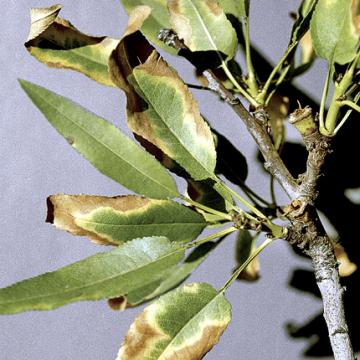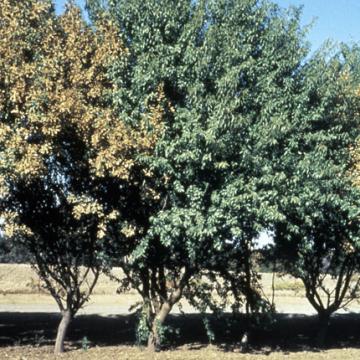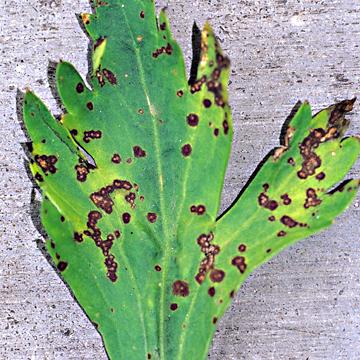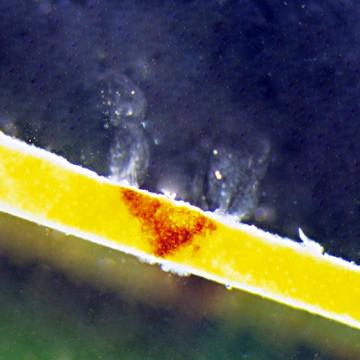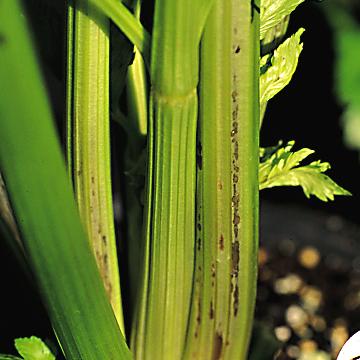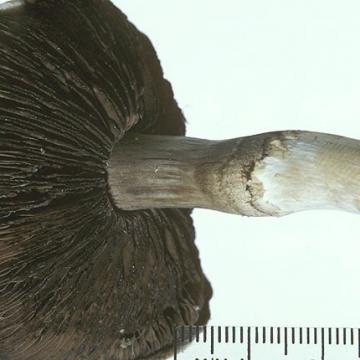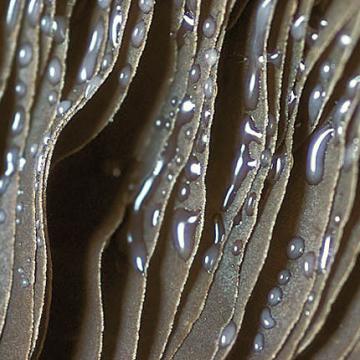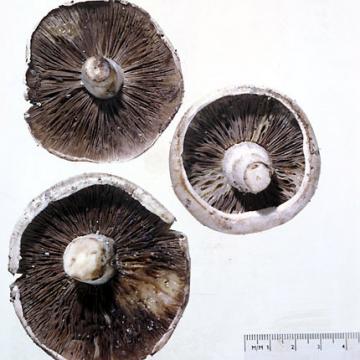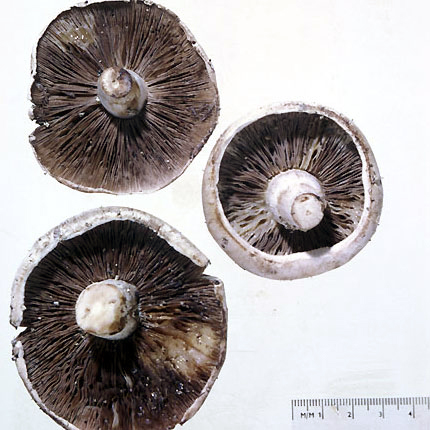DISEASE: Almond leaf scorch
HOST: Almond
Light brown necrotic (scorched) areas on curling leaves.
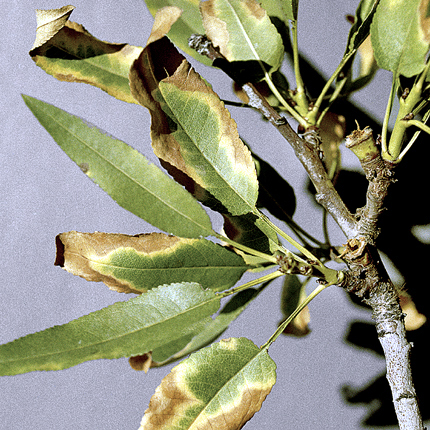
Almond leaf scorch | Almond
DISEASE: Almond leaf scorch
HOST: Almond (Prunus dulcis)
PATHOGEN: Xylella fastidiosa
SOURCE: W. Sinclair
DISEASE: Almond leaf scorch
HOST: Almond
Dying almond trees with scorched appearance. Initial symptoms are marginal chlorosis, usually late in the year. Scorch often is first noted at leaf tips, symptoms worsen, and terminal branches may die.
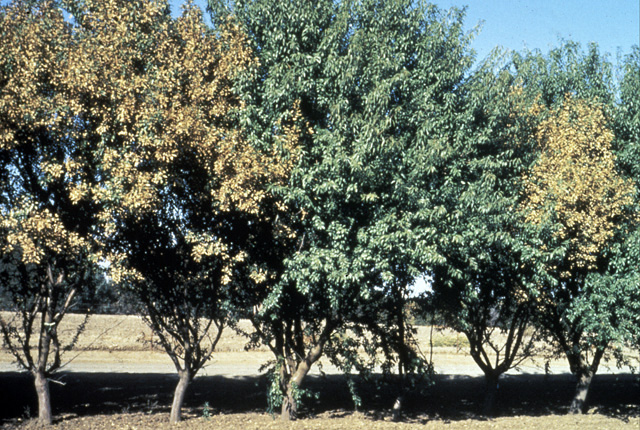
Almond leaf scorch | Almond
DISEASE: Almond leaf scorch
HOST: Almond (Prunus dulcis)
PATHOGEN: Xylella fastidiosa
SOURCE: R. Davis, M. Davis
DISEASE: Bacterial blight (Brown stem)
HOST: Celery
Lesions are necrotic and circular to angular. Some have yellowish halos. Older lesions become brown and dry.
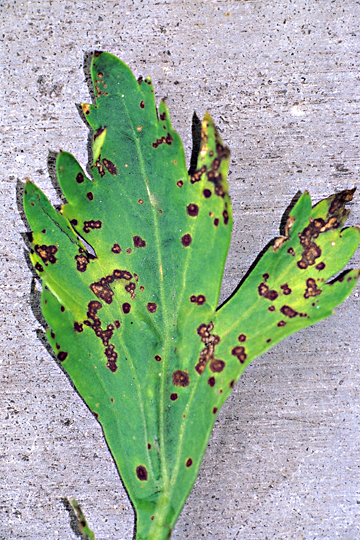
Bacterial blight (Brown stem) | Celery
DISEASE: Bacterial blight (Brown stem)
HOST: Celery (Apium graveolens)
PATHOGEN: Pseudomonas cichorii
SOURCE: R. Raid
DISEASE: Bacterial blight (Brown stem)
HOST: Celery
Ooze from lesion on celery leaf.
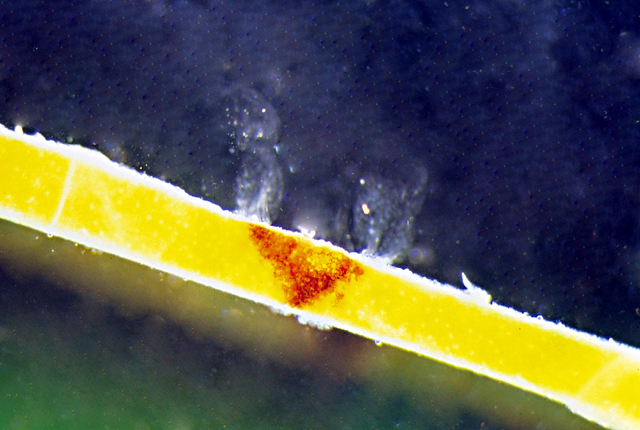
Bacterial blight (Brown stem) | Celery
DISEASE: Bacterial blight (Brown stem)
HOST: Celery (Apium graveolens)
PATHOGEN: Pseudomonas cichorii
SOURCE: R. Raid
DISEASE: Bacterial blight (Brown stem)
HOST: Celery
Characteristic brown discoloration of petioles, which is more evident on inside of petiole close to the crown. Parenchyma tissues are firm and brown.
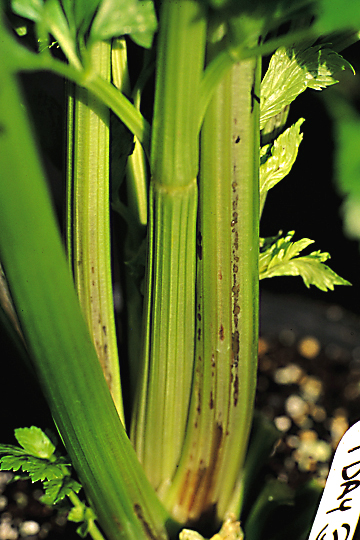
Bacterial blight (Brown stem) | Celery
DISEASE: Bacterial blight (Brown stem)
HOST: Celery (Apium graveolens)
PATHOGEN: Pseudomonas cichorii
SOURCE: K. Pernezny
DISEASE: Drippy gill
HOST: Mushroom
Drippy gill is characterized by small dark spots on gills with drops of bacterial ooze at the centers. Severe infection results in slimy areas and collapse of gills.
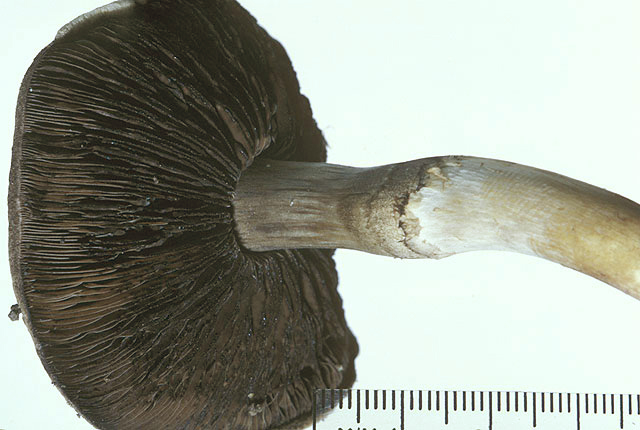
Drippy gill | Mushroom
DISEASE: Drippy gill
HOST: Mushroom (Agaricus campestris)
PATHOGEN: Pseudomonas agarici
SOURCE: J. Young
DISEASE: Drippy gill
HOST: Mushroom
Close-up of infected gills with bacterial ooze.
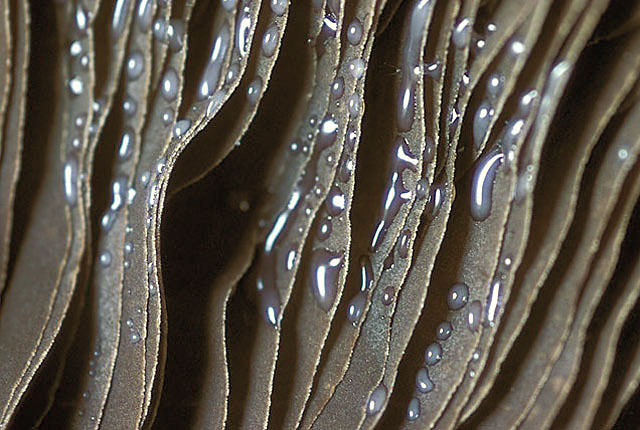
Drippy gill | Mushroom
DISEASE: Drippy gill
HOST: Mushroom (Agaricus campestris)
PATHOGEN: Pseudomonas agarici
SOURCE: J. Young


